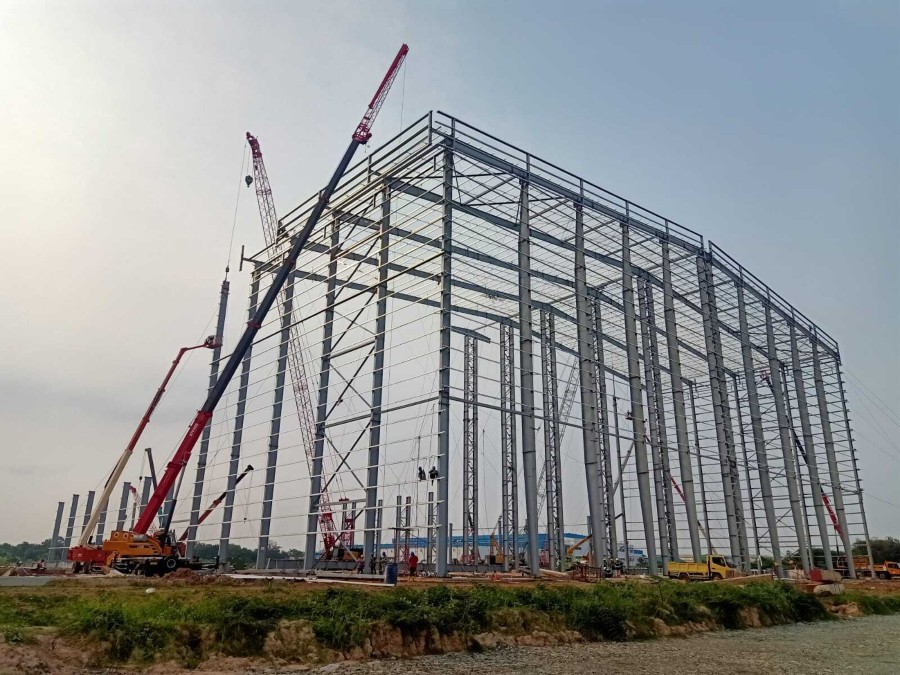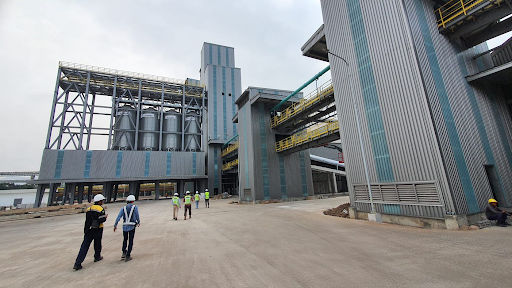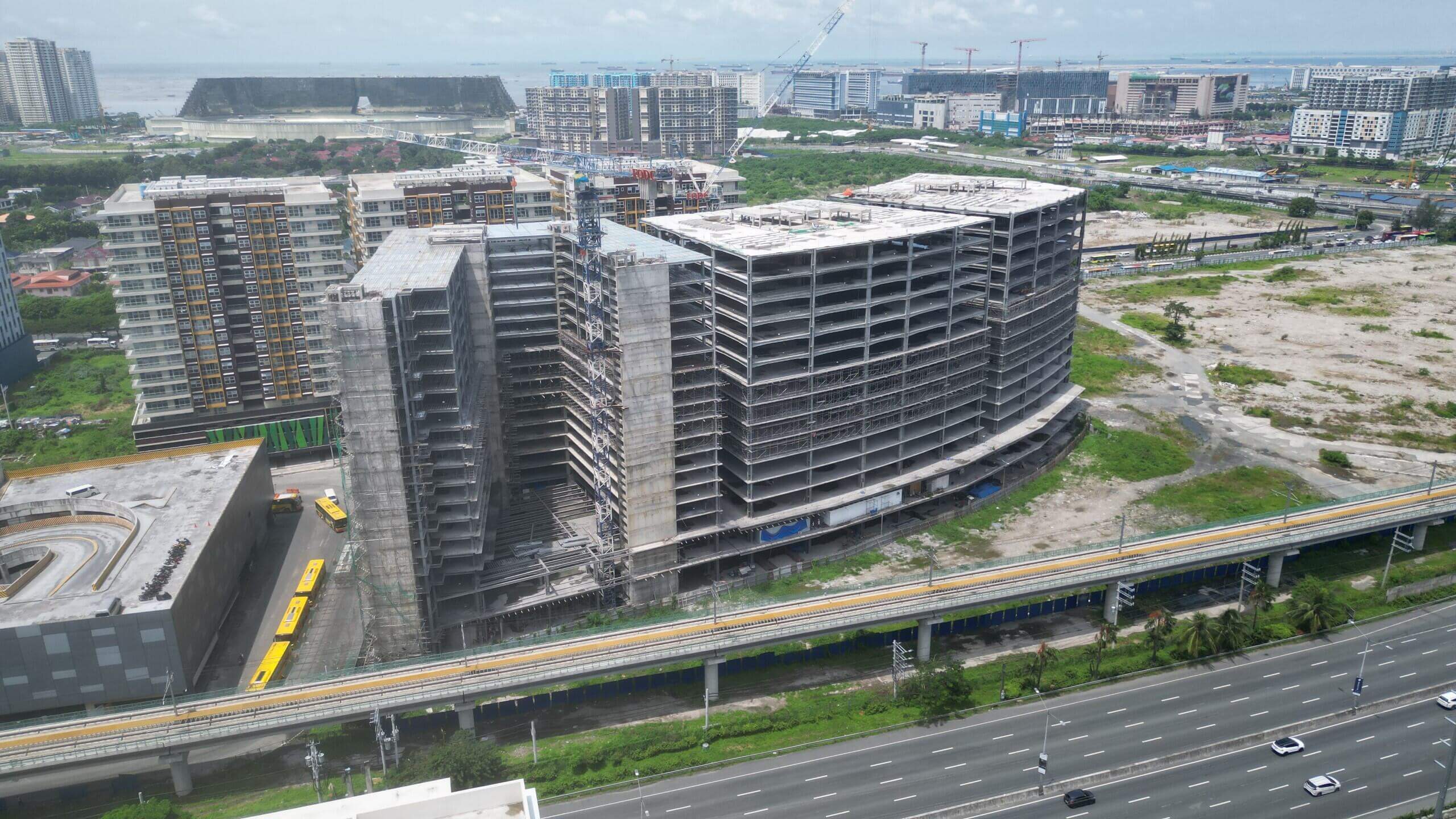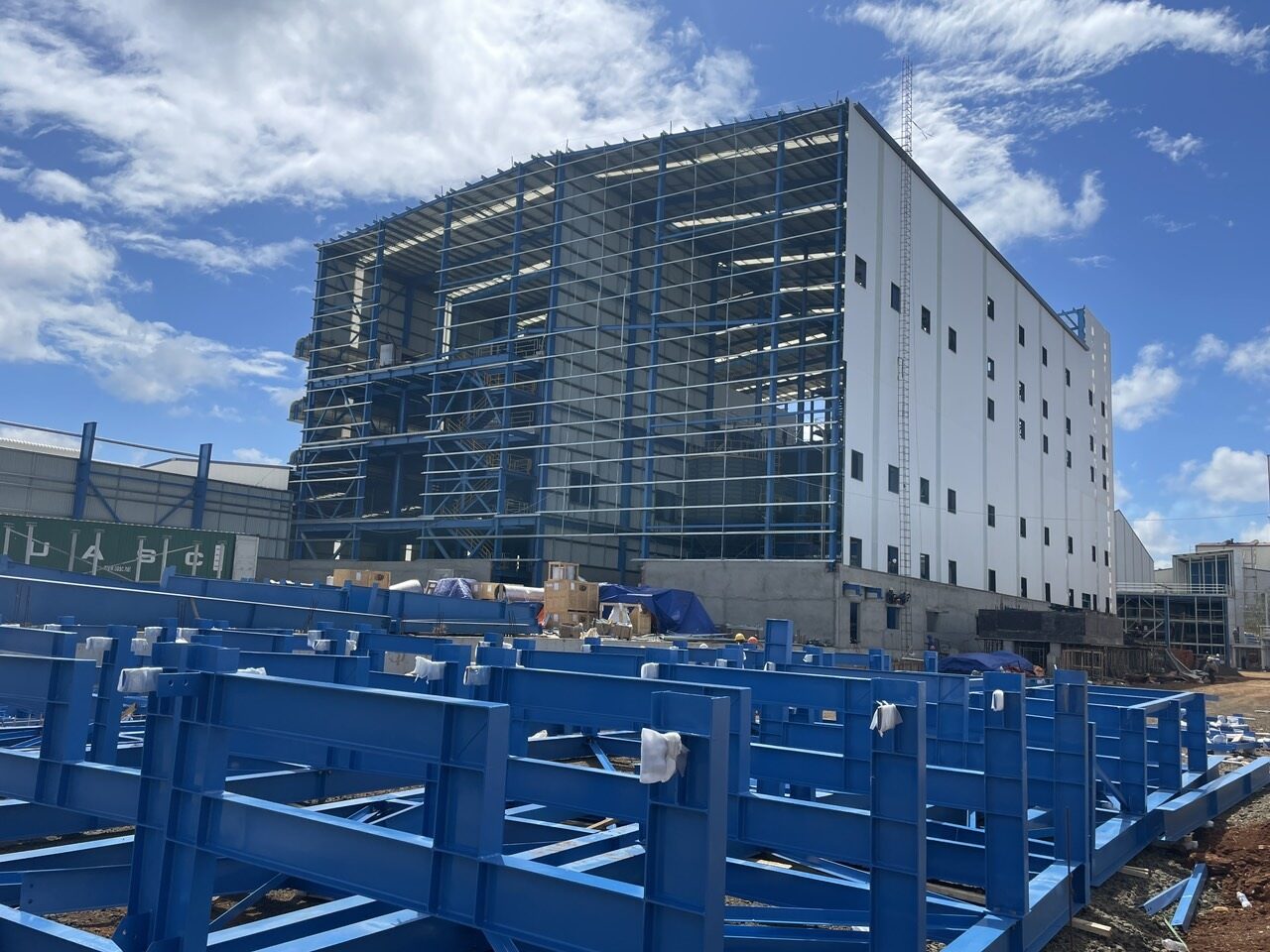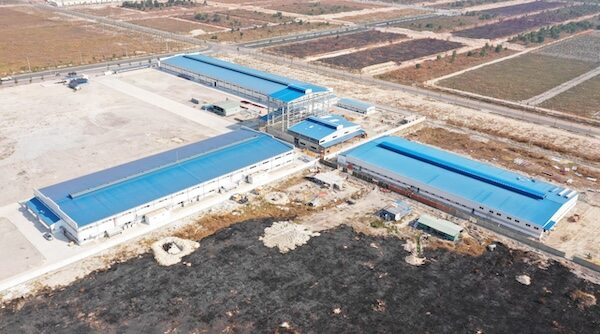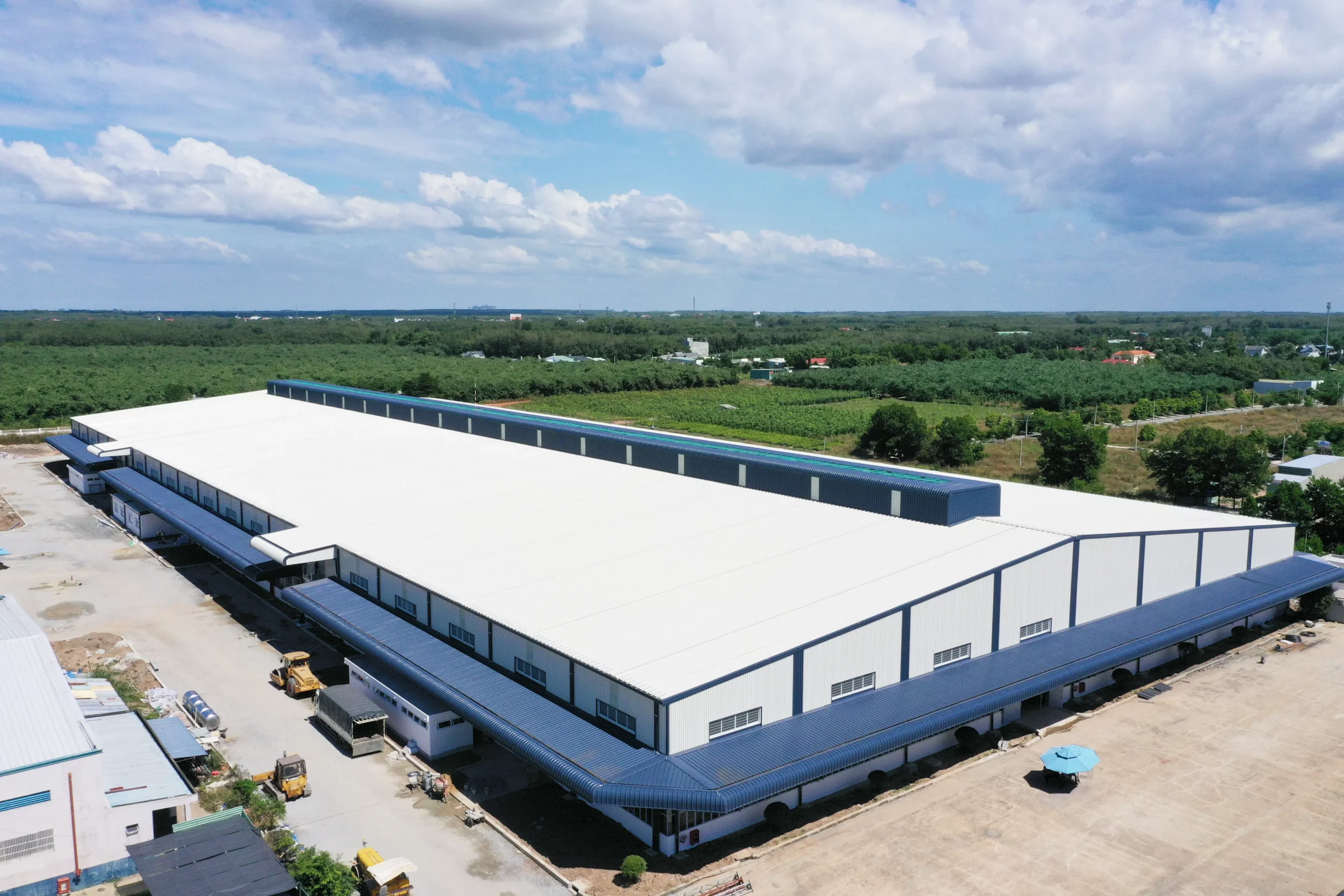A single steel foundation structure is a crucial element in the construction industry, playing a key role in ensuring the durability and safety of buildings. Understanding the steel structure of single foundations, their classification, and the construction process not only helps engineers and contractors improve project quality but also optimizes costs and construction time. This article will provide you with a comprehensive overview of single steel foundation structures, aiding effective application in your construction projects.
1. What is a Single Steel Foundation Structure?
1.1. Concept of Single Steel Foundation Structure
A single foundation, also known as a pad foundation, is a common shallow foundation type in construction. This foundation is designed with a simple structure, easy to construct, and cost-effective. The shape of an isolated footing is typically a rectangular, square, or circular reinforced concrete block, embedded deep into the soil to transfer the building’s loads to the ground.
1.2. Advantages of Using Single Foundations
Simple and Quick Construction
Single foundations have an easy-to-construct structure, consisting of a single reinforced concrete block in rectangular, square, or circular shapes. This design helps reduce construction costs and time compared to more complex foundation types.
Suitable for Light Load Structures
With its ability to support light loads, a single foundation is ideal for structures such as residential houses, warehouses, and low-rise factories. It ensures stability and safety for structures that do not require large load-bearing capacities.
Ideal for Simple Terrains
Single foundations are commonly used in areas with flat or gently sloping terrains. They are popular in rural residential construction where flat terrain helps save costs and construction time.
Non-Interfering with Structural Integrity
Buried under the ground, single foundations do not interfere with the upper structure of the building. This ensures stability and does not disrupt the overall design.
1.3. Disadvantages and Limitations of Single Foundations
Limited Load-Bearing Capacity
Single foundations are not suitable for structures requiring high load-bearing capacities such as high-rise buildings, overpasses, or complex structures. Using single foundations for these structures may lead to overload risks, necessitating careful construction planning.
Subsidence Risk on Weak Soil
In cases where the soil conditions are not sufficiently stable, such as sandy soil or areas with high groundwater levels, single foundations can subsist or deform, causing significant problems for the structure. This is particularly important when choosing single foundations for areas with unstable geological conditions.
Unsuitable for Complex Terrains
Single foundations are not ideal for construction on complex terrains such as mountainous areas, hard sandy beaches, or rocky areas. For construction projects like houses, hotels, or villas in areas with poor soil conditions, pile foundations are often the preferred option to ensure stability and safety.
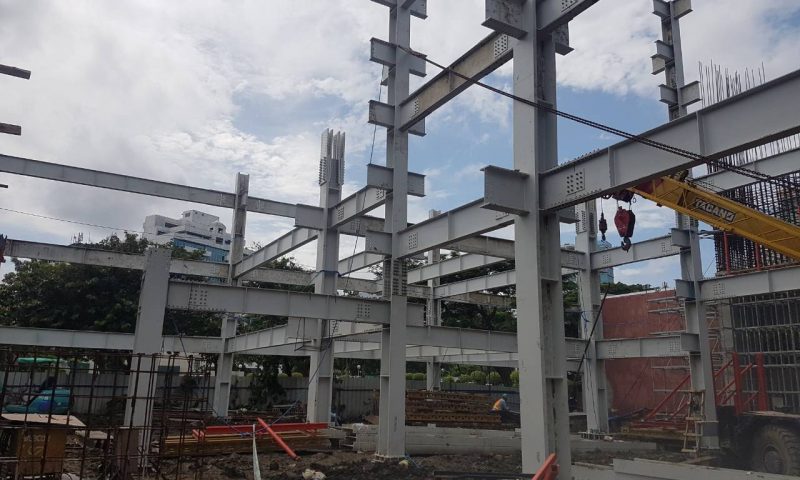
What is a Single Steel Foundation Structure
2. Structure of Single Steel Foundation
For isolated footings constructed using brick, the basic structure consists of courses of bricks stacked on top of each other. For reinforced concrete isolated footings, the structure includes four basic components:
2.1. Concrete Pad Layer
This layer not only helps clean and level the foundation pit but also prevents cement water loss and creates a formwork for pouring the main concrete foundation, ensuring the foundation’s durability and quality.
2.2. Foundation (Base Slab)
The foundation’s base has a rectangular bottom with a moderate slope, designed to distribute the load evenly to the soil. The size and shape of the base slab are carefully calculated by construction engineers to match each type of project, ensuring the foundation has good load-bearing capacity and avoids subsidence.
2.3. Foundation Neck
This helps enhance the concrete protection layer for the reinforcement in the foundation neck while effectively transmitting force and load from the column to the foundation base. Properly designed foundation necks prevent cracking and ensure structural stability.
2.4. Foundation Tie Beam
The foundation tie beam connects the main columns, forming a solid linkage frame. The tie beam supports the above partition walls and reduces differential settlement between foundations, ensuring the uniformity and stability of the foundation.
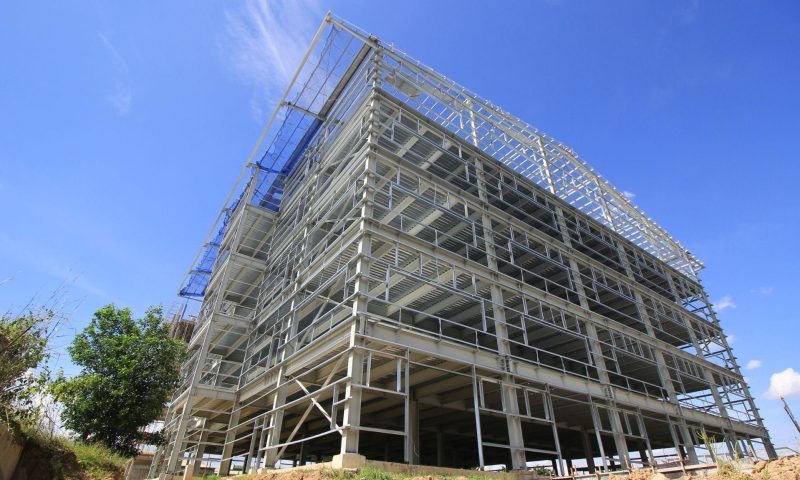
Structure of Single Steel Foundation
3. Common Classification of Single Steel Foundation Structures
Single foundations are essential in construction and are classified based on various criteria such as the type of project, shape, load-bearing capacity, and depth of the foundation. Selecting the appropriate single foundation requires careful consideration of factors like building load, soil conditions, and construction methods.
3.1. Classification by Type of Project
Single Foundation for One-Story House: This type of foundation is small, suitable for light structures such as single-story houses or rural garden houses. Due to the low load, the single foundation for one-story houses is simple and easy to construct.
Single Foundation for Two-Story House: For two-story houses, the single foundation needs a higher load-bearing capacity. The foundation size is increased to ensure stability and safety, requiring a robust design with good load-bearing capacity.
Single Foundation for Three-Story House: These foundations must support large loads, ensuring the building’s durability and safety.
3.2. Classification by Shape
Square Single Foundation: Commonly used for structures requiring a wide and stable contact surface with the ground, such as warehouses. Square foundations distribute the load evenly, enhancing stability.
Rectangular Single Foundation: Suitable for long structures or those needing a large contact area in one direction. Rectangular foundations distribute the load along the length, ideal for long warehouses or factories.
Circular Single Foundation: Suitable for structures requiring good load-bearing capacity and easy construction, such as streetlight poles. The circular shape helps distribute force evenly in all directions, enhancing stability.
3.3. Classification by Load-Bearing Capacity
Light Load-Bearing Single Foundation: Used for residential houses, warehouses, or low-rise factories. This foundation is simple in design, sufficient for small loads, and easy to construct.
Medium Load-Bearing Single Foundation: Suitable for projects like two-story houses or light industrial buildings. This foundation supports additional loads from equipment, machinery, and rooftops, ensuring stability.
Heavy Load-Bearing Single Foundation: Designed for large structures like three-story houses, high-rise buildings, or overpasses. These foundations have high load-bearing capacity, ensuring safety and durability for structures with large loads.
3.4. Classification by Foundation Depth
Shallow Single Foundation: Buried shallowly under the ground, suitable for light structures like small pavements. This type is easy to construct and cost-effective.
Deep Single Foundation: Buried deeper, supporting large structures or those with heavy loads, like bridge foundations. Deep foundations ensure stability and high load-bearing capacity, suitable for projects requiring high durability.
The selection of an appropriate single foundation also depends on other technical factors such as soil type (sandy, clayey, rocky, etc.), surrounding environment (seismic zones, areas affected by groundwater, etc.), and construction conditions (accessibility, weather, etc.). Construction engineers need to conduct geological surveys, detailed load calculations, and use simulation software to ensure the optimal choice of single foundations for each specific project.
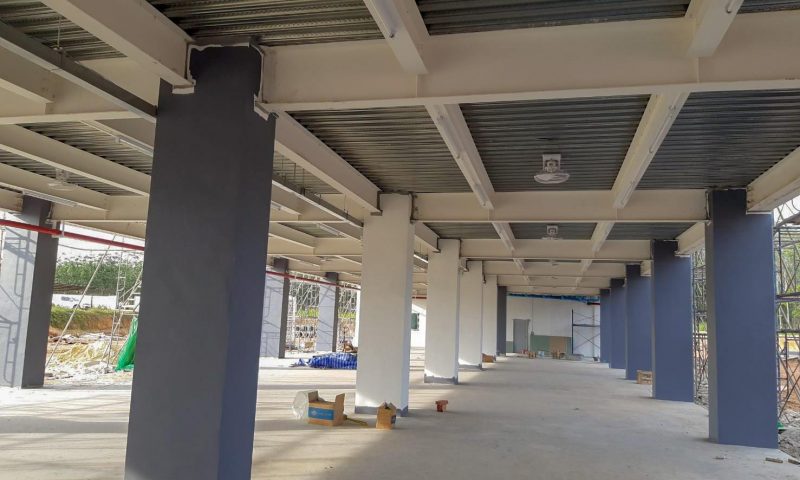
Common Classification of Single Steel Foundation Structures
4. Standard Construction Process for Single Foundations
Step 1: Site Preparation and Equipment Setup
After completing the geodetic survey and agreeing on the construction method, the first step is site preparation and equipment setup. The site must be cleared and tidy, with construction equipment, building materials, and manpower fully arranged. Thorough preparation ensures that the following construction steps proceed smoothly and meet the scheduled progress.
Step 2: Pile Driving
Based on the design drawings and the characteristics of the site, construction engineers will determine the appropriate pile driving positions and distances. For single foundations on weak soil, additional reinforcement with bamboo or timber piles is necessary to increase stability.
Step 3: Excavation of Foundation Pit
The next step is excavating the foundation pit around the marked positions. The dimensions of the foundation pit must comply with the design drawings, ensuring sufficient width, length, and depth to meet technical requirements.
Step 4: Leveling the Foundation Pit
After excavation, the foundation pit needs to be cleaned and leveled. Using soil or a thin layer of gravel to level the surface is common. Specialized machinery like tamping machines or manual tampers will ensure the foundation pit’s surface is flat and compacted to the required standard.
Step 5: Pouring the Concrete Pad
Once the foundation pit is leveled, the concrete pad is poured. This pad layer prevents water loss from the mortar and upper concrete layers, while also fixing and leveling the foundation base, providing a solid base for the single foundation.
Step 6: Arranging Reinforcement Bars
Depending on the shape of the single foundation, the reinforcement bars are arranged according to the design. The bars must be placed about 5 cm from the concrete pad to avoid corrosion and enhance the bond between the foundation and the pad layer.
Step 7: Pouring the Foundation Concrete
Finally, the concrete is mixed according to standard proportions and poured into the footing excavation. The concrete pouring process must follow the principle of pouring from the far end towards the near end to ensure the bonding and quality of the concrete. Care must be taken to avoid having the footing excavation filled with water during this process, as the water can reduce the concrete’s bonding ability and adversely affect the quality of the concrete.
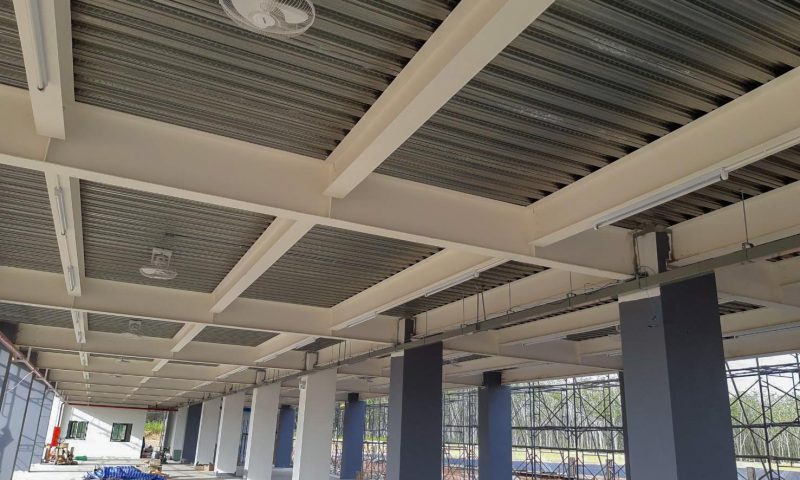
Standard Construction Process for Single Foundations
5. Important Notes When Constructing Single Steel Foundation Structures
5.1. Thoroughly Survey the Ground Conditions Before Construction
To ensure the single foundation can support the load of the structure, surveying the ground conditions before construction is essential. Single foundations are often used for low-load structures such as residential buildings and light industrial structures, thus requiring the ground to have good load-bearing capacity. The survey process helps determine geological conditions, groundwater levels, and other factors, allowing for the most suitable single foundation design, ensuring durability and safety.
5.2. Handling Foundation Pits When Flooded
If flooding occurs in the foundation pit during excavation, timely measures must be taken to avoid compromising the foundation’s quality. Using wide tarpaulins to prevent groundwater from seeping into the pit is effective. Once the water is blocked, proceed with formwork installation and concrete pouring. Note that during the concrete pouring process, water must not seep into the pit, as this can reduce the bond and quality of the concrete.
5.3. Choosing Experienced Contractors
The quality of single-foundation construction greatly depends on the skill and experience of the workers. Skilled and experienced contractors will ensure that the foundation’s structural steel elements meet standards, from cutting and tying rebar to concrete pouring. The construction process needs to be closely supervised to avoid sloppy work, lack of experience, or incorrect techniques, ensuring the foundation is safe and robust upon completion.
By understanding single steel foundation structures, common foundation types, and the standard construction process, you can ensure the safety and economic efficiency of your projects. Pebsteel, with 30 years of expertise, stands as a top choice for providing structural steel foundation services for businesses, ensuring high quality and optimized construction costs.
If you are looking for comprehensive solutions in steel structure construction, contact Pebsteel via email at marketing@pebsteel.com.vn or hotline at (+84) 908 883 531 for consultation!
*** This article is intended to provide general information about the pre-engineered steel building and steel structure industry only. For further details or clarification based on your needs, please contact Pebsteel directly.






